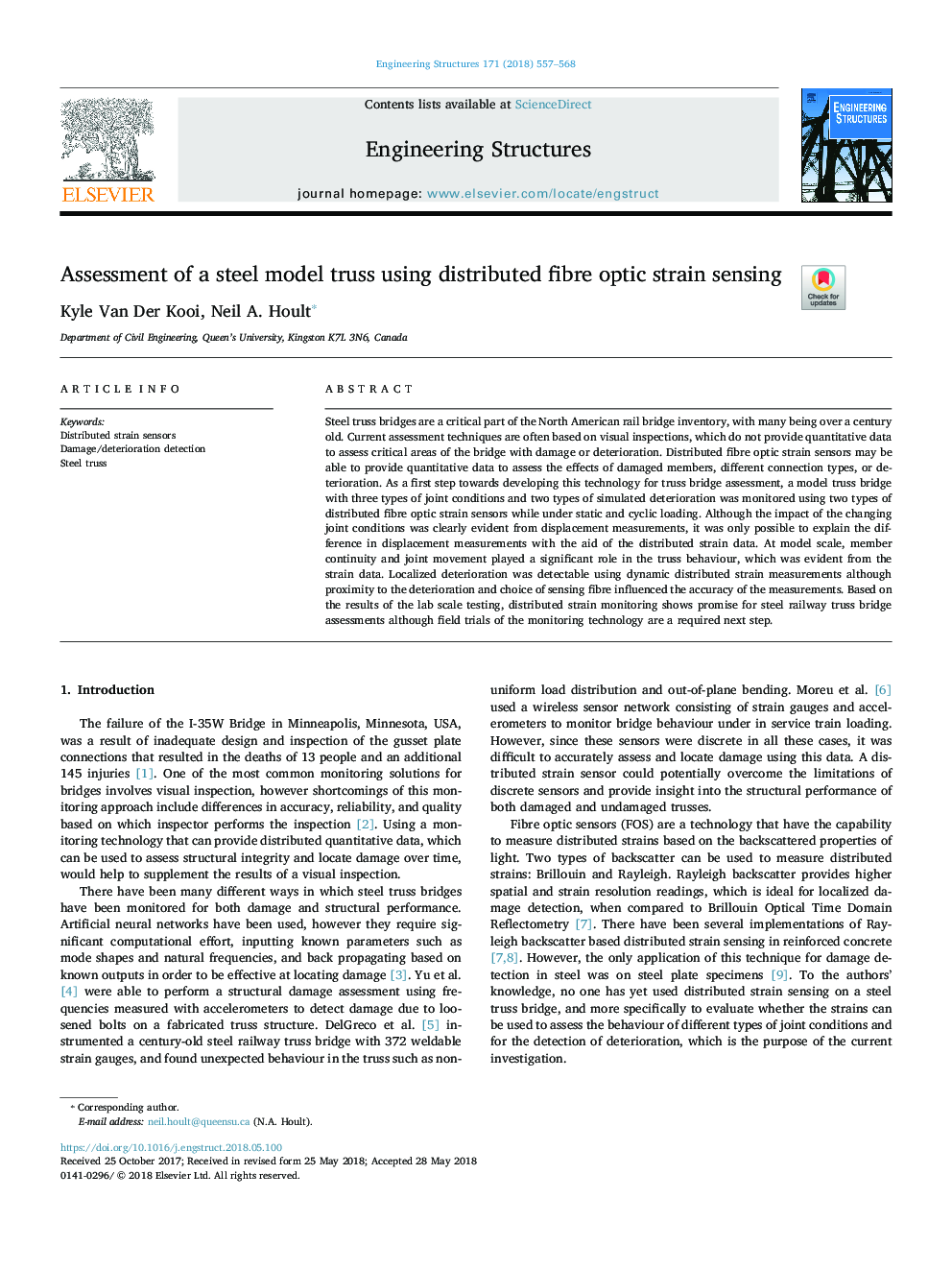| Article ID | Journal | Published Year | Pages | File Type |
|---|---|---|---|---|
| 6736371 | Engineering Structures | 2018 | 12 Pages |
Abstract
Steel truss bridges are a critical part of the North American rail bridge inventory, with many being over a century old. Current assessment techniques are often based on visual inspections, which do not provide quantitative data to assess critical areas of the bridge with damage or deterioration. Distributed fibre optic strain sensors may be able to provide quantitative data to assess the effects of damaged members, different connection types, or deterioration. As a first step towards developing this technology for truss bridge assessment, a model truss bridge with three types of joint conditions and two types of simulated deterioration was monitored using two types of distributed fibre optic strain sensors while under static and cyclic loading. Although the impact of the changing joint conditions was clearly evident from displacement measurements, it was only possible to explain the difference in displacement measurements with the aid of the distributed strain data. At model scale, member continuity and joint movement played a significant role in the truss behaviour, which was evident from the strain data. Localized deterioration was detectable using dynamic distributed strain measurements although proximity to the deterioration and choice of sensing fibre influenced the accuracy of the measurements. Based on the results of the lab scale testing, distributed strain monitoring shows promise for steel railway truss bridge assessments although field trials of the monitoring technology are a required next step.
Keywords
Related Topics
Physical Sciences and Engineering
Earth and Planetary Sciences
Geotechnical Engineering and Engineering Geology
Authors
Kyle Van Der Kooi, Neil A. Hoult,
